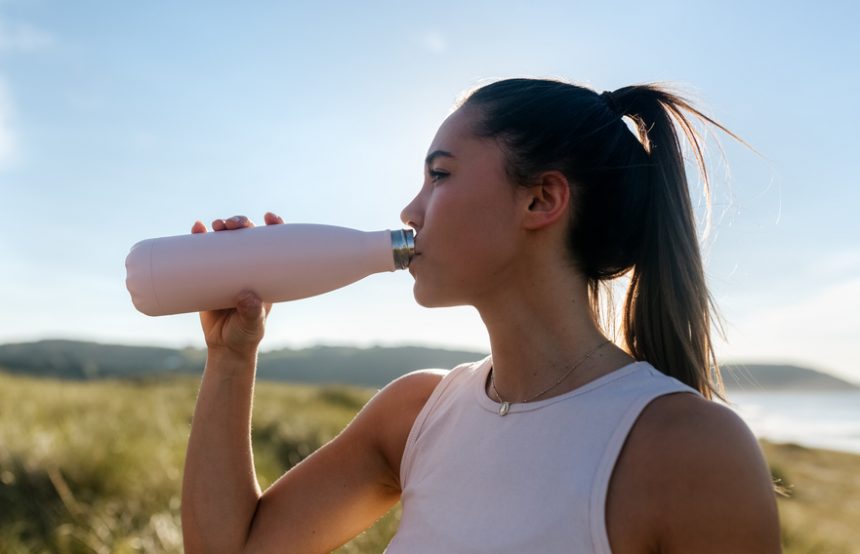For further insight, Craig elaborates on why daily washing of your water bottle is essential, while Julianne Ryan, director of product management at YETI, provides expert tips on effectively cleaning your water bottle to remove dirt and germs.
How often should you wash your reusable water bottle?
Craig emphasizes the importance of washing your reusable water bottle daily. Harmful pathogens can quickly multiply in unwashed bottles, leading to rapid spread. “Some bacteria, such as E.coli, can reproduce in under an hour under the right conditions. Cross-contamination is easy with water bottles, resulting in high bacteria counts within a day,” says Craig.
Craig highlights that the areas of most concern for bacteria growth in water bottles are the straws, rubber seals, and spouts. “Wet areas that can occasionally dry out, like straws or rubber seals of the lids, are prone to rapid bacterial growth. The spout is also a potential concern,” explains Craig.
What happens if you don’t wash your water bottle regularly?
While a certain level of bacteria is normal in water bottles, prolonged unwashed bottles facilitate increased bacterial growth. Craig explains, “Bacteria naturally exist in our mouth, face, skin, nose, etc., and it’s easy for this bacteria to enter your water bottle. Although the bacteria may be naturally occurring, if allowed to thrive, they can cause issues.” Even though bacteria may not be visible, it can still lead to illness. Craig warns, “Bacteria can form films or clumps that may go unnoticed as you consume them, increasing the bacteria count to potentially harmful levels.”
Additionally, flavorings and additives in water can enhance bacterial growth. Craig mentions, “Flavorings, powders, proteins, and other additives in your water provide nutrients that feed bacteria. Plain water is less likely to promote bacterial growth than flavored water.”
Fortunately, the bacteria found in water bottles are not as harmful as common foodborne pathogens. Craig reassures, “The chances of dangerous pathogens in your water are low unless you are extremely negligent. However, the possibility remains, and the bacteria consumed could cause stomach problems rather than severe foodborne illnesses.”
What’s the best way to clean a reusable water bottle?
Craig suggests using hot, soapy water to wash reusable water bottles. He recommends paying attention to the hard-to-reach areas like straws, lids, and spouts. Ryan also endorses mild dish soap and warm water for cleaning YETI’s products like the Rambler and Yonder drinkware. Thoroughly cleaning all parts, including caps, lids, and accessories separately, is essential according to Ryan.
Ryan mentions that YETI’s drinkware is dishwasher safe. However, she advises washing each component separately. “Place the drinkware body standing upside down on the top or bottom rack, and keep the lids and bottle caps on the top rack away from heat. Gaskets or the magnetic slider should be placed in the silverware tray on the bottom rack,” instructs Ryan.
After cleaning, Ryan recommends ensuring all parts are dry before reassembling and storing the water bottle. Avoid using abrasive cleaners, bleach, or stiff bristle brushes that may damage the bottle lining. Craig adds, “Avoid using a metal scrubber as it can create areas for bacteria to thrive. Always drain the water bottle upside down after washing.”
Can storing the water bottle in the fridge help with bacteria?
Craig explains that cold temperatures can slightly slow down bacterial growth. However, it does not eliminate bacteria entirely. Just like leftover food can still mold in the fridge, bacteria in water bottles can persist in cold temperatures. “Cold temperatures only delay bacterial growth; they do not prevent it. Bacteria will continue to thrive,” clarifies Craig.
Our editors independently select these products. Making a purchase through our links may earn Well+Good a commission.





